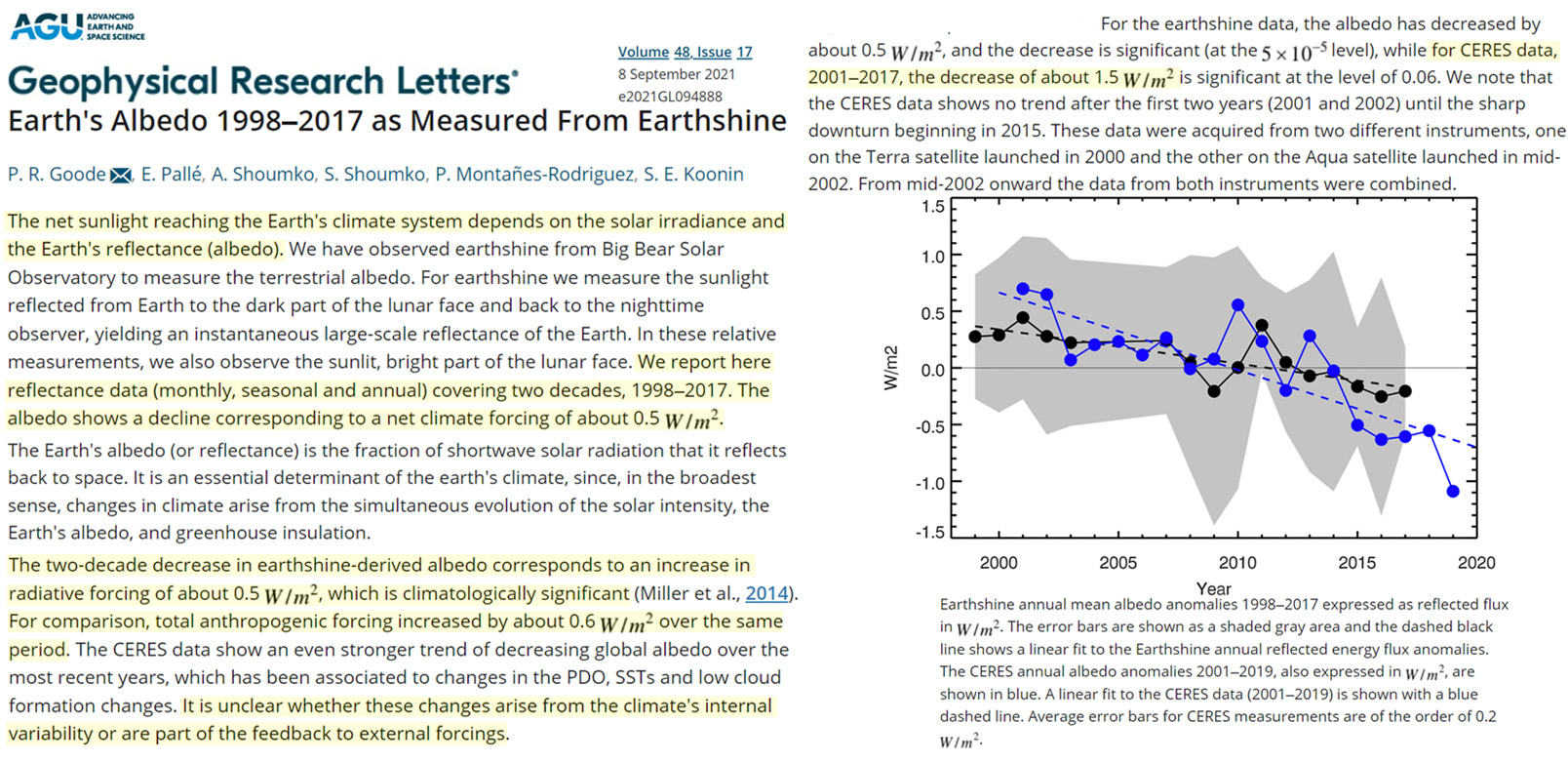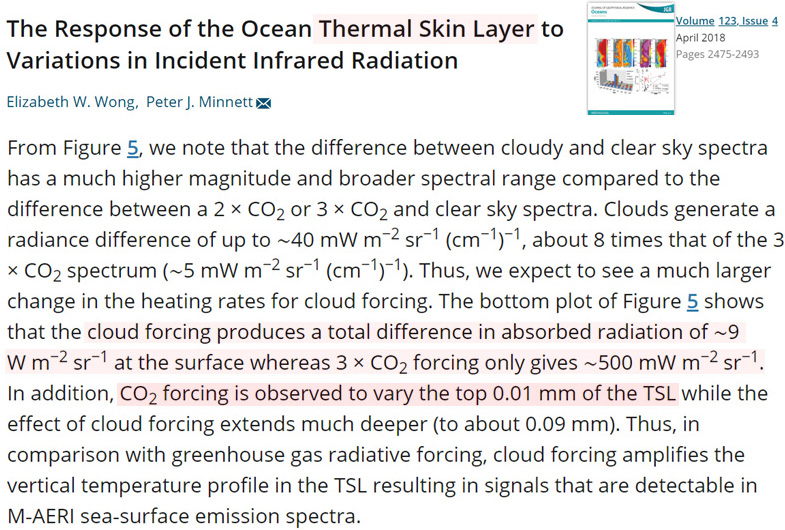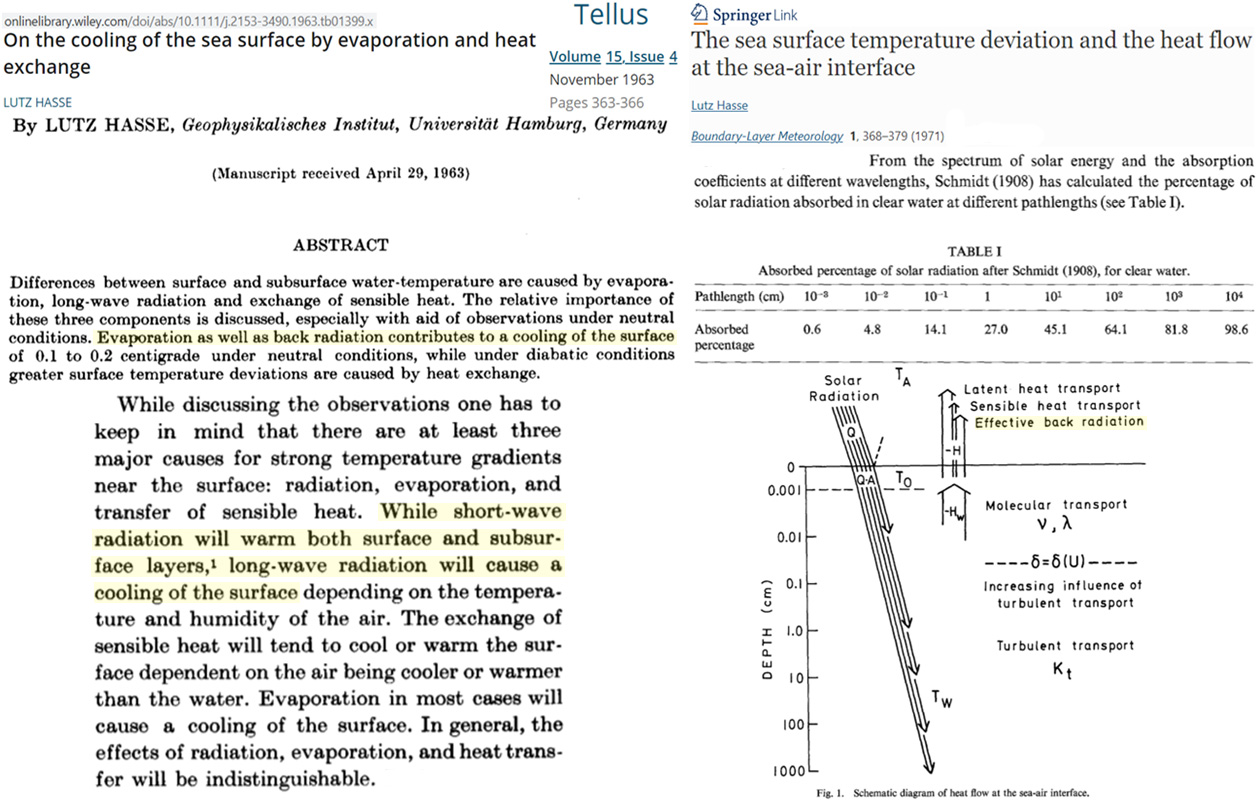The net climate forcing from albedo changes can account for the increase in ocean heat content in recent decades.
Scientists (Goode et al., 2021) have determined Earth’s albedo declined from 1998-2017, driving a +0.5 W/m² net increase in absorbed solar radiation, a positive energy imbalance.

Image Source: Goode et al., 2021
The authors report it is “unclear whether these changes arise from the climate’s internal variability or the feedback to external forcings.” (Given the absolute certainty that humans are driving Earth’s energy imbalance promulgated in media, one would have assumed the mechanism(s) driving albedo changes would not still be unclear.)
Human CO2 forcing was said to be +0.6 W/m² over this period (1998-2017), which would effectively match the imbalance derived from albedo changes.
However, CO2 forcing cannot radiatively affect more than the top 0.01 mm of the ocean surface, effectively ruling out CO2 as a factor in ocean heat transfer (and global warming). In contrast, solar radiation penetrates deeply (10s of meters) and directly heats the ocean.
So the +0.5 W/m² increase in absorbed solar radiation can explain increases in ocean heat content, whereas the longwave radiation increase associated with greenhouse gas emissions (+0.6 W/m²) cannot.

Image Source: Wong and Minnett, 2018
As mentioned, CO2 radiative forcing does not affect more than the top 0.01 mm of the 4,000,000 mm deep ocean. This is the penetrative “depth” where evaporative cooling occurs.
Furthermore, while it has long been confirmed that shortwave radiation directly warms the top tens of meters of the ocean, it is less commonly reported that longwave radiation (i.e., from greenhouse gases) actually contributes to the cooling of the ocean surface (Hasse, 1963 and 1971).
This once again contradicts the claims that human emissions are driving changes in ocean heat content.






[…] New Study: Absorbed Solar Radiation Increased From 1998-2017…Explaining Ocean Warming […]
This is incorrect: “However, CO2 forcing cannot radiatively affect more than the top 0.01 mm of the ocean surface, effectively ruling out CO2 as a factor in ocean heat transfer (and global warming).”
The ocean is constantly churning, so it does not matter at what depth a photon is absorbed. Its heating effect is simply its energy: 1.99×10⁻²⁵ J·m / λ
If you plug in the numbers you can calculate that to evaporate a single molecule of liquid water at 25°C would require the amount of energy provided by absorption of nearly 5.8 billion 15 µm LW IR photons.
In fact, it would require the absorption of about 9.4 million 15 µm photons to merely raise the temperature of one molecule of water by 1°C. So water can obviously absorb “downwelling” LW IR radiation without evaporating.
We’re talking magnitudes, Dave.
“it would require the absorption of about 9.4 million 15 µm photons to merely raise the temperature of one molecule of water by 1°C”
It only takes 12 hours for solar radiation to uniformly warm up the top 2 meters of the ocean surface by 2 Kelvin.
How long does it take CO2 to warm up a body of water? Provide the real-world experiment quantifying this derivative.
Can we agree that Climate Forcing is caused by the IPCC and gullible politicians?
Merry Christmas Pierre and your loved ones, and all readers.
And while the New Year will start out cold and miserable it seems likely that the Greens will finally achieve Net Zero (in voting – at least because their stupidity will result in an enormous backlash).
[…] New Study: Absorbed Solar Radiation Increased From 1998-2017…Explaining Ocean Warming […]